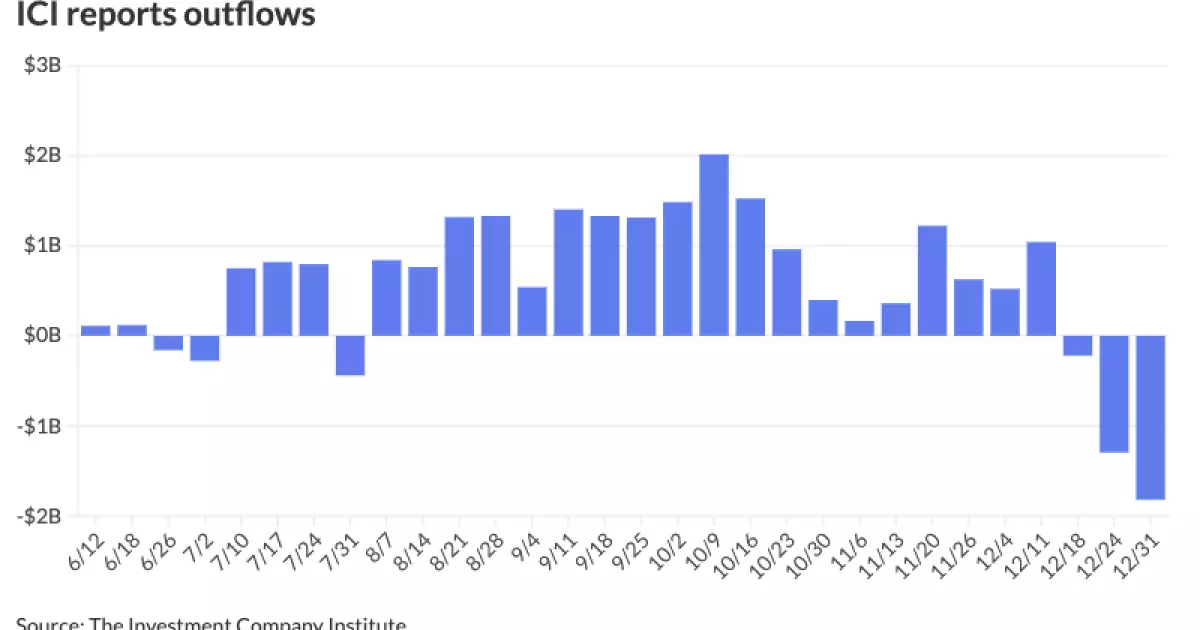Recent movements within the municipal bond market illustrate a period of volatility, largely driven by shifts in economic policy as conveyed through the Federal Reserve’s meeting minutes. On a notable Wednesday, municipal bonds experienced a noticeable sell-off that particularly impacted longer-term securities. Conversely, U.S. Treasuries managed to close with slight gains, underlining a mixed sentiment pervading equities as investors digested the Fed’s tempered stance on interest rate cuts. The market’s response was characterized by municipal yields rising as much as 12 basis points, reflecting a necessary recalibration of investor expectations after the Fed’s recent decisions.
As the market adjusted, various yield ratios followed suit, indicating a rising trend. For instance, the two-year municipal to UST ratio settled at 65%, while the long-term securities like the 30-year escalated to approximately 81%. These statistics highlight how closely municipal bond yields tend to mirror U.S. Treasuries as the financial landscape evolves, signaling a potentially increased risk appetite among investors.
The minutes released from the December Federal Open Market Committee meeting revealed a clearer picture of the Fed’s approach moving forward. Analysts, including BMO Capital Markets’ Sal Guatieri, emphasized the Fed’s intent to adopt a more cautious policy easing strategy, with indications that rate cuts may now proceed at a slower pace. This represents a significant pivot from previous expectations of aggressive rate reductions—a sentiment echoed by various economists who are interpreting the Fed’s signals as a reflection of persistent inflation concerns and other economic variables.
Furthermore, the outlook for economic growth has been adjusted downward amidst external factors such as tariffs that may impede market recovery. This tempered growth forecast, combined with the recognition of upside risks to inflation, suggests an environment where policymakers are exercising restraint. Market players are recognizing that the bond market’s sentiment may have shifted, with a noticeable loss of confidence in both the Fed and Treasury, potentially destabilizing bond yields.
Experts like Byron Anderson from Laffer Tengler Investments highlighted the evolving role of short sellers in the current market context, suggesting that they are now exerting a considerable influence. The dynamics of Treasury auctions have also begun to reflect this development, with reports of increasing ‘tails’—a term indicating the difference between auction results and market expectations. The upcoming maturity of $14.6 trillion in Treasury securities over the next two years compounds this complexity, adding pressure on primary dealers who are experiencing elevated inventory levels.
As the capital structure shifts, it becomes increasingly evident that liquidity issues plague the bond market. Primary dealers may soon find themselves tasked with a heavier burden as the Federal Reserve prepares to transition from quantitative tightening (QT) to a pattern that may evoke greater stability—if such a transition occurs as theorized.
For the municipal bond market, the current environment presents a dual-faceted perspective where risk and reward coalesce uniquely. Fixed income strategist Cooper Howard noted that although yields have been somewhat compressed relative to their Treasury counterparts, absolute yields still hold significant appeal. The favorable tax implications of municipal bonds further enhance their attractiveness amid an otherwise pressured yield landscape.
Despite the current credit quality peak, the overall conditions remain favorable for most issuers, suggesting that investment opportunities within this category may be more robust than initially perceived. However, as the marketplace readjusts and lower-rated issuers witness tighter spreads, potential pitfalls loom on the horizon. Market participants should proceed with caution, as the landscape’s evolving nature could shift the balance of investment performance significantly.
As we move forward through an increasingly complex economic landscape, the implications of Federal Reserve policy and the resultant market reactions will be pivotal for both municipal bonds and Treasuries. The connection between economic indicators, investor sentiment, and risk assessment emerges as foundational to understanding the state of these securities. Given the nuanced interplay of risks and opportunities, market participants would do well to remain vigilant, carefully analyzing how global economic factors could further shape the investment climate in the months and years to come.
Overall, it’s essential to recognize the importance of adaptive strategies in navigating this changing environment, ensuring that investment decisions are both informed and aligned with anticipated market shifts.

